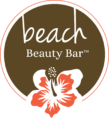Flawless skin isn’t the result of using moisturizers and serums alone, it’s equally important to wash your face correctly.
But how do you wash your face? Are you using a washcloth? Did you know that a washcloth that is left wet after use can accumulate millions of bacteria and harbor mold in a matter of minutes? This is mainly due to the damp, hot environment they live in after they’re used.
So unless you’re laundering your washcloth daily, chances are you’re spreading germs over your face every time you cleanse.
That’s not the only issue. Using a washcloth can also cause friction and irritation if you’re prone to skin conditions like rosacea, acne or eczema. If used too vigorously or too often, mechanical exfoliation in this way can lead to inflammation and irritation in the skin, resulting in poorer skin health and appearance.
What Should You Use to Wash your Face?
We recommend our clients use a 4×4 esthetic wipe to take off their cleanser. A simple splish splash does not get your face clean enough…
And don’t forget to wash around your ears, front and back, and between your eyebrows and on the nose bridge and into your hairline. These are the areas we see people missing most often.
A typical reusable washcloth is too rough on acne-prone skin, unless you have non-inflamed only acne. That’s why we love disposable 4 x 4 esthetic wipes to use like a washcloth. You simply wet it and gently remove the sudsy or creamy cleanser from your face.
When you’re done, toss it in the trash. Always clean. Always fresh. Always gentle.
When it comes to waging this war on acne, we like to take a gentle approach.
Don’t Use Face Wipes or Makeup Wipes
Makeup wipes are the illusionists of the skincare world.
They give the appearance of cleaning your skin by picking up surface-level grime and makeup, but what they’re not doing is diving deep into pores and giving them a proper cleaning.
Not only are wipes leaving daily grime behind, but they’re also leaving surfactants (cleansing agents) on your skin. These are too strong for sensitive skin to tolerate for prolonged periods of time, leading to irritation. Another reason why rinsing after cleansing is always best.
Turn Down the Temperature
Hot water is one of your skin’s biggest foes.
It can over-dry your skin by stripping it of natural oils, cause redness due to dilated blood vessels and capillaries and promote excessive sebum production by messing with the balance of your skin.
Test the temperature of the water on the inside of your wrist where the skin is its most sensitive. It should feel lukewarm to touch.
Try rinsing your face with lukewarm water prior to cleansing, as this will help to open your pores, and following up with cold water to seal your skin’s cuticle.
Wash Your Face Out of the Shower
We’re all for time-saving measures, but there are two reasons why you shouldn’t wash your face in the shower:
- Your shower is generally going to be too hot for the skin on your face, so you risk stripping it of its natural oils.
- Any residue from washing your hair that ends up on your face has the ability to clog your pores.
The bottom Line
Skincare can be a constant struggle and may often seem like an uphill battle. However, when it comes to maintaining a radiant, healthy complexion, knowledge is power. Knowing the answers to questions like, “How often should you wash your face?” and “Should I be using a washcloth to clean my face?” can give you the upper hand on your blemishes and breakouts.
When in doubt, just reach out! We are here to help you on your clear skin journey. Schedule your appointment today & let us know how we can be there for YOU!
Cheers to Clear!
Rene

